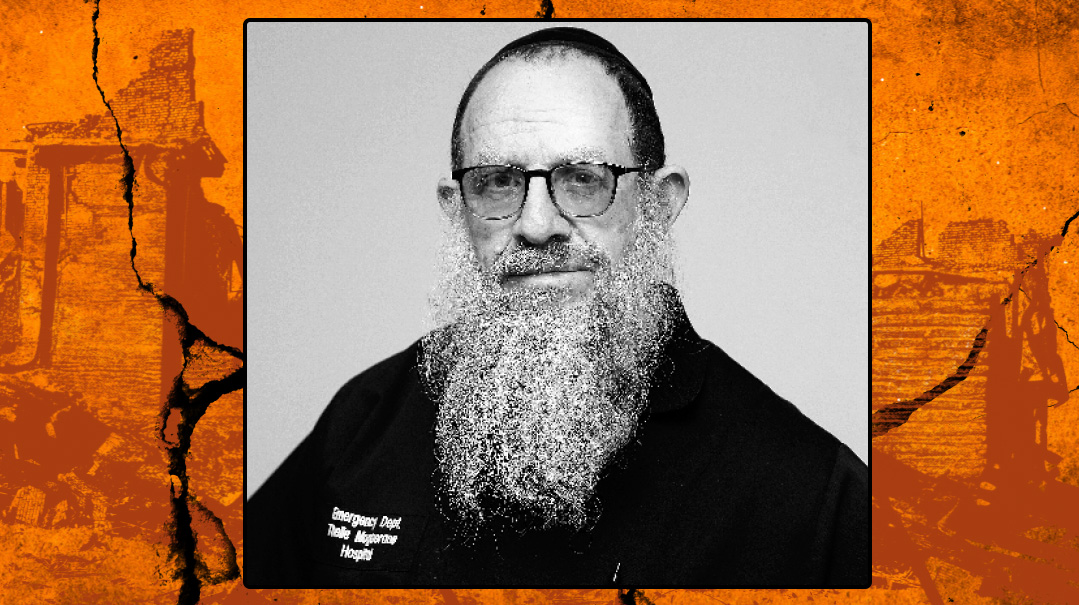Field Doctor

When FIFA hired disaster doc Professor Efraim Kramer

Photos: Ilan Ossendryver, Personal archives
People who were curious about the fellow with the black yarmulke, mingling with the VIPs on the soccer field during the summer that Russia hosted the World Cup, would be excused if they thought he was a Chabad rabbi from Moscow or a baal teshuvah Russian oligarch.
In fact, the mysterious kippah-clad fellow conferring with the heads of FIFA was none other than a frum South African doctor, considered the world’s expert on both disaster and sports medicine.
Professor Efraim Kramer is the retired head of Emergency Medicine at the University of the Witwatersrand, Johannesburg, and professor of Sport Medicine at Pretoria University. In 2018, he was appointed Chief Medical Officer of the FIFA World Cup — but that was really just the culmination of 35 years in the trenches as a mass casualty/disaster medicine authority, having directed international rescue teams in earthquakes, tsunamis, hurricanes, floods, and volcanic eruptions. And while he’s traveled to 78 different countries and has served on the medical team at seven World Cups, the place he’s truly at home is the Johannesburg Kollel, where he spends his mornings learning Torah.
In a way, it’s coming back to his roots.
In the early part of the 20th century, Lithuanian Jewry began to emigrate by the thousands to more hospitable environs (and not just politically, but a place that was warmer and sunnier than the freezing, dark north). Among those hordes were the Kramers. Efraim’s grandfather was a talmid of the Slabodka yeshivah and his father of the yeshivah in Shavel. Like the great waves of immigrants to America at the turn of the century, for these newcomers faced with adjustment and the rigors of finding a livelihood, religion fell to the wayside.
The Kramers ended up in Welkom in the Orange Free State in central South Africa. To portray how removed Welkom is from the South Africa people identify primarily as Johannesburg and Cape Town, the closest towns are Odendaalsrus, Kroonstad, Phuthaditjhaba, Bultfontein, Bloemfontein (the provincial capital), and Potchefstroom. There were about 100 Jewish families in Welkom, all of them secular Litvaks.
“My upbringing in Welkom,” says Professor Kramer, “was completely secular, to the extent that I learned my bar mitzvah parshah on a tape recorder and then regurgitated it at the said time on a Shabbos.”
Once Efraim finished high school, his father asked him about his future plans. He answered with nothing more loquacious than shrugged shoulders, for he hadn’t really given it too much thought. In Welkom, where the dominant language was Sotho and the major employment was mining, gainful employment was not a subject that merited a lot of attention.
Efraim’s father, though, had a bigger agenda for his son, proposing the possibility of a medical career. And so, without much thought concerning his own future, Efraim applied to University of the Witwatersrand, which had a few open spots for English-speaking medical students from the Orange Free State.
Surprising even himself, Efraim finished all of his medical training, but soon after was conscripted into the South African Army and placed at the Military Aeromedical Institute. He was assigned to helicopter aeromedical evacuations and a spark suddenly ignited. Efraim Kramer was now engaged in high-octane exploits that made emergency room work seem as mild as milk.
Treating a stationary patient on a bed on the ground can be stressful even at a fully staffed hospital. Compare that to the belly of a helicopter, with insufficient light, limited space, and vibrating from turbulence, altitude fluctuations, and maybe even enemy gunfire.
“This kind of work,” says Professor Kramer, looking back, “made me an emergency medical adrenaline junkie for good.”
Oops! We could not locate your form.







